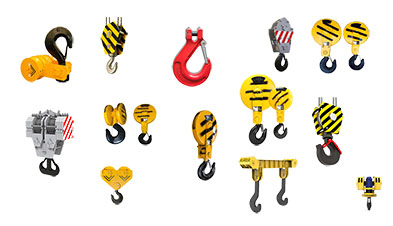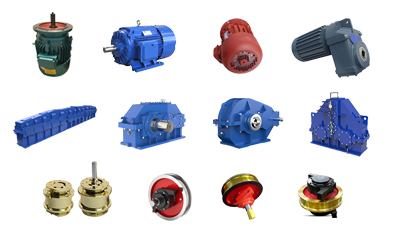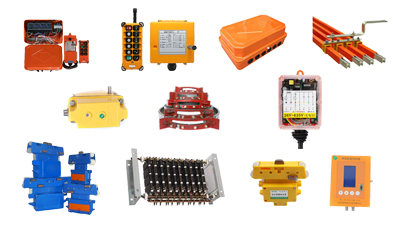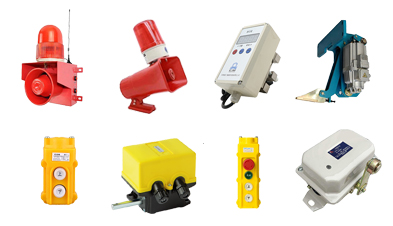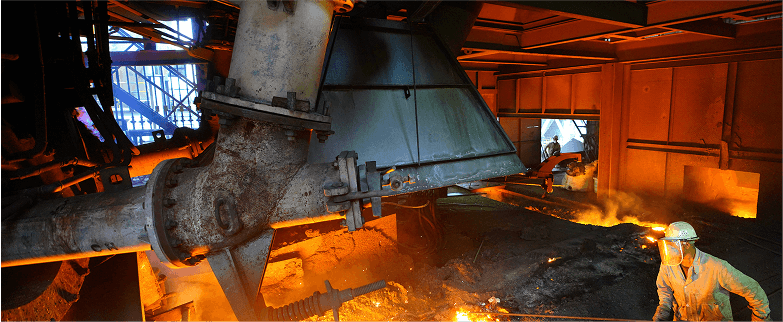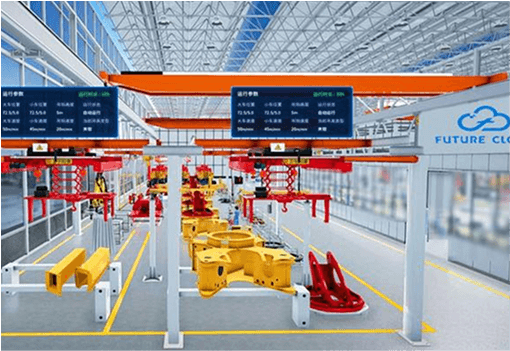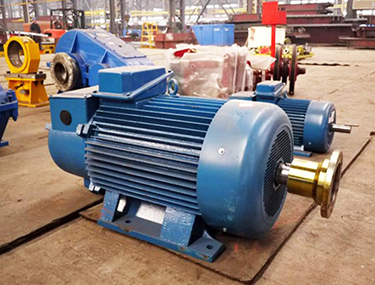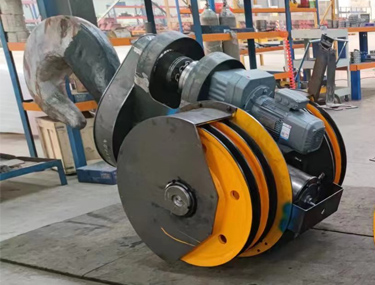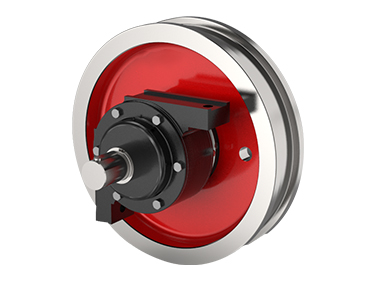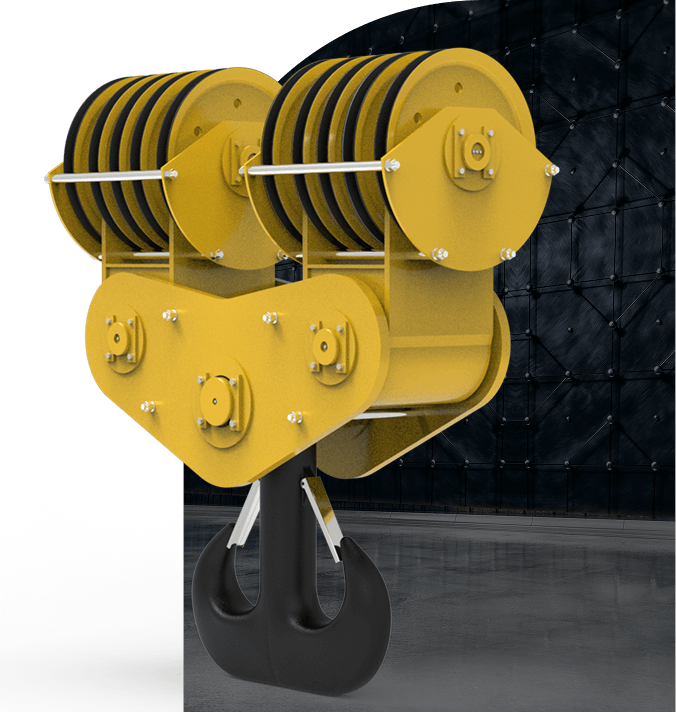Selection Guide
In the steel production process, cranes are key equipment for material handling, equipment maintenance and production process optimization. Choosing the right crane can not only improve production efficiency, but also reduce operating costs and safety risks. The following are the main considerations and recommended solutions for steel plant crane selection:
1 .Crane Type Selection
Metallurgical casting crane (ladle crane)
Application:
Molten steel lifting operations such as blast furnaces, converters, refining furnaces, and continuous casting.
Features:
- High temperature resistance (equipped with thermal insulation protection devices).
- High safety (double brakes, anti-fall, anti-sway).
- Precise positioning (frequency conversion speed regulation + PLC control).
Recommended :
75t~500t selected according to the ladle capacity
Metallurgical casting crane (ladle crane)
Application:
Molten steel lifting operations such as blast furnaces, converters, refining furnaces, and continuous casting.
Features:
- High temperature resistance (equipped with thermal insulation protection devices).
- High safety (double brakes, anti-fall, anti-sway).
- Precise positioning (frequency conversion speed regulation + PLC control).
Recommended :
75t~500t selected according to the ladle capacity
Metallurgical casting crane (ladle crane)
Application:
Molten steel lifting operations such as blast furnaces, converters, refining furnaces, and continuous casting.
Features:
- High temperature resistance (equipped with thermal insulation protection devices).
- High safety (double brakes, anti-fall, anti-sway).
- Precise positioning (frequency conversion speed regulation + PLC control).
Recommended :
75t~500t selected according to the ladle capacity
Metallurgical casting crane (ladle crane)
Application:
Molten steel lifting operations such as blast furnaces, converters, refining furnaces, and continuous casting.
Features:
- High temperature resistance (equipped with thermal insulation protection devices).
- High safety (double brakes, anti-fall, anti-sway).
- Precise positioning (frequency conversion speed regulation + PLC control).
Recommended :
75t~500t selected according to the ladle capacity
2 .Key selection parameters
Parameter considerations
The lifting capacity is selected according to the maximum single lifting load (such as the total weight of the ladle + molten steel).
The span depends on the width of the plant or the operating area (bridge crane) or the length of the track (gantry crane).
The lifting height must meet the highest lifting requirements (such as crossing the furnace, rolling mill, etc.).
The working level of the steel industry usually requires A6~A8 (heavy load, high frequency operation).
The running speed is variable frequency speed regulation + precise positioning (the lifting of molten steel needs to be slow and stable, and the logistics handling can be faster).
High temperature resistance performance Molten steel handling requires the use of insulation boards, high temperature resistant steel wire ropes, etc.
Anti-sway control Ladle cranes need to be equipped with anti-sway systems (such as Siemens anti-sway technology).
The degree of automation can be selected from remote control, automatic positioning, intelligent anti-collision, etc. (recommended for intelligent steel plants).
3. Safety and compliance requirements
National standards: comply with GB/T 14405 "General purpose bridge cranes", JB/T 7688.1 "Technical conditions for metallurgical cranes", etc.
Safety devices:
- Overload limiter, limit switch, double brake system.
- Ladle cranes must have emergency power supply (safely put down the load in case of sudden power outage).
Explosion-proof/corrosion-proof: Explosion-proof cranes (Ex d IIB T4) are required for pickling and galvanizing workshops.
4. Intelligent upgrade options
Remote monitoring
real-time monitoring of crane status (wire rope wear, motor temperature, etc.).
Automatic positioning
laser guidance or RFID identification for precise lifting.
Predictive maintenance
fault warning system based on the Internet of Things (IoT).
5. Recommended selection process
1. Clear requirements: determine the lifting capacity, span, and working environment (high temperature/explosion-proof).
2. Select the type: bridge, metallurgical casting, gantry or cantilever crane.
3. Safety certification: ensure compliance with metallurgical industry standards (such as CE, ISO).
4. Intelligent configuration: select intelligent control systems according to automation requirements.
5. Supplier evaluation: select manufacturers with experience in metallurgical cranes (such as Konecranes, ABUS, Taiyuan Heavy Industry, etc.).
Conclusion
The selection of steel mill cranes needs to comprehensively consider the four major factors of load, environment, safety and efficiency. Metallurgical casting cranes are suitable for handling high-temperature molten steel, bridge/gantry cranes are suitable for handling raw materials and finished products, and intelligent functions can further improve production efficiency and safety. Choosing the right crane can significantly optimize the steel production process and reduce operating costs.
Technical features
Crane in the steel industry usually has high load (up to hundreds of tons), high temperature resistance, explosion-proof and automatic control capabilities. Some models integrate intelligent monitoring systems to achieve remote operation and fault warning.
